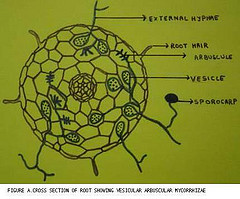Wildfire activities: New patterns of mobility and learning
A truly interesting mLearn 2008 keynote was titled Wildfire activities: New patterns of mobility and learning by Prof Yrjö Engeström, Professor of Adult Education and Director of the Center for Activity Theory and Developmental Work Research at the University of Helsinki. Engeström is best known for his work around activity theory.
In his presentation he asked the audience to reconsider what mobility really means, not just movement enabled by mobile ICTs but movement in terms of information flow, production, workplace dynamics, etc. Mobility is presented as the underpinning of wildfire activities. Read on to understand what this means … (it’s a long post, but he’s a seriously bright cookie and worth hearing out.)
Reconceptualising mobility
Kris Gutierrez (UCLA) posits that in all education there is the official script of the educator, and the often invisible counter-script of the learners. These frequently collide, but when they engage in dialogue and hybridize, we get powerful “third spaces” of learning.
Historically, mobility was directed from the periphery to the centre, from novice to master. In an industrial/production world the movement is linear, from beginning to end (assembly line, business process or individual career). But this is breaking down today.
In wildfire activities of social production, mobility takes the shape of expansive swarming and multidirectional pulsation, with emphasis on sideways transitions and boundary-crossing. Wildfire activities are seen in some web 2.0-enabled communities. But he wanted to talk about the “old” new wildfire activities, e.g. birding, and not just web 2.0 phenomena like Wikipedia.
Historicising activity: from craft to social productions
| Nature of object | Locus of agency | Coordinating mechanism | |
|---|---|---|---|
| CRAFT | Personal object | Individual actor | Identification and subordination |
| MASS PRODUCTION | Problematic object | Team | Process management |
| SOCIAL PRODUCTION | Runaway object (therefore never complete), e.g. Linux | Knots in mycorrhizae (Think “legitimate peripheral participation” (Levine and Wenger, 1991)) | Negotiation and peer review |
What are wildfire activities and why they’re important?
Humans and organisations are seeking models that enable continuous, engaged, self-renewal, innovation and expansion, yet are sustainable and don’t burn out over time, e.g. skateboarding, bird watching and the emergency relief arm of the Red Cross.
Paradoxes of these activities:
- Discontinuous but demonstrate longevity and persist over time
- There is no mechanism that forces them to continue
- Dispersed and distributed, yet well co-ordinated and aware of the whole in each node
- Participants are offered little publicly recognisable rewards but are highly motivated
Important characteristics:
- Resistant to thorough commercialisation
- “Gift economy”, peer-to-peer or social production
- Quick adoption and creative use of up-to-date ICTs, but little emphasis and depedency on them; no closed world of virtuality
Are not:
- Just wikinomics or large numbers of people doing something together
- Just open source
- Just the Internet
- Just social network sites
Nothing new about these communities, but almost no history or studies on them.
Communities as mycorrhizae

Mycorrhizae
- Craft community: relatively closed and stable, dominated by tradition
- Mass production community: rule-governed, relatively transparent but clearly bounded and centrally controlled
- Wildfire community: mycorrhizae-like, hybrid, poorly bounded, the centre does not hold
Mycorrhizae — a symbiotic association between a fungus and the roots of a plant — is a useful metaphor. They are hard to to kill, but also vulnerable (weather pattern dependent).
Hybrid mycorrhizae as communities:
- Birding: hybrid of birder and researchers
- Skating: skaters, merchandise sponsors and media
What it all means for learning?
Learning in wildfire activities — a working hypothesis:
- Learning is mostly horizontal that crosses boundaries and ties knots between actors operating in fractured and often poorly charted terrains
- It is subterrainian learning that blazes embodied and lived cognitive trails and social bonds that make the terrains knowable and livable
- Self-reflective learning (skaters video tape themselves), birder report every observation. Lots of criticality, peer-review
- It is learning by experiencing high-stakes personal involvement, risks
- It is both quick improvisational adaptation and long-term design
- It is holoptic — as opposed to panoptic — where every node can see all other nodes. It is oriented toward a global view of events while engaged in intense local action. Access from every node, but no central control
What does it mean for education systems? We don’t know. We are only beginning the research into this. Perhaps these activities are only oddities and have nothing to teach us, but he doesn’t think so.
Further research is needed into understanding what the motivators are, and what the desirable output is. We need to think through these questions from a school perspective too.
When something changes, that requires sense making. Sense making is learning. Therefor: Learning is based on difference. Anything that shifts your location, your perspective, that is mobility and therefor that is learning.
Summary
Wildfire activities spread quickly, are hard to control, are characterised by irregular bursts of activity, are disruptive, are almost always perceived as illegitimate, contestable. Wildfire activities are a specialised form of informal learning. There is a love-hate relationship between vertical and horizontal activity communities, e.g. Microsoft and Linux. Very uneasy but necessary dialectical relationship.
His latest book: From Teams to Knots.
Image by INeedCoffee (CC-By-SA)



